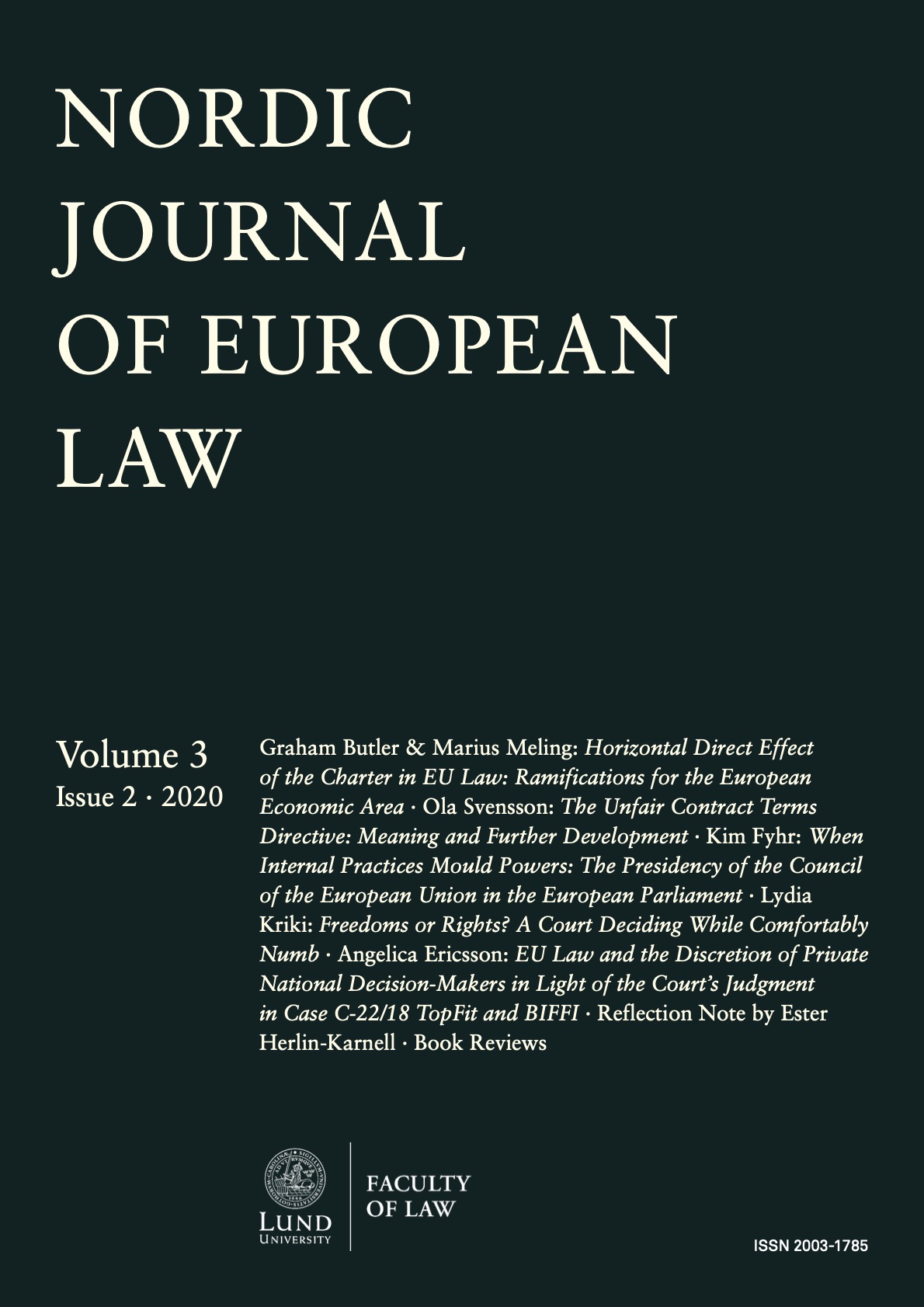Horizontal Direct Effect of the Charter in EU Law: Ramifications for the European Economic Area
Main Article Content
Abstract
In a consistent line of jurisprudence, the Court of Justice of the European Union (CJEU) has now stated that, as a last resort, provisions of the EU Charter of Fundamental Rights (the Charter) can have horizontal direct effect. More specifically, this possibility occurs when a provision of the Charter has been given specific expression to from a directive. Whilst it has long been the case that directives in themselves continue to not have horizontal direct effect in EU law, there is no doubting that the horizontal direct effect of provisions of the Charter, which in turn are given specific expression to from a directive, is increasingly being found. This possibility of horizontal direct effect of the Charter is of striking significance for European Economic Area (EEA) law for two reasons. Firstly, there is no doctrine of direct effect in EEA law according to the European Free Trade Association (EFTA) Court; and secondly, the Charter is not incorporated into EFTA pillar of EEA law in any way. Given the potential for the widening divergence between EU law and EEA law on the existence of horizontal direct effect of the Charter when given specific expression to from a directive, with a homogeneity gap opening up, this article considers the ramifications for the EEA of such advances in EU law, and proposes some solutions for how these EU legal developments can be responded to within EEA law.
Article Details

This work is licensed under a Creative Commons Attribution-NonCommercial-NoDerivatives 4.0 International License.

